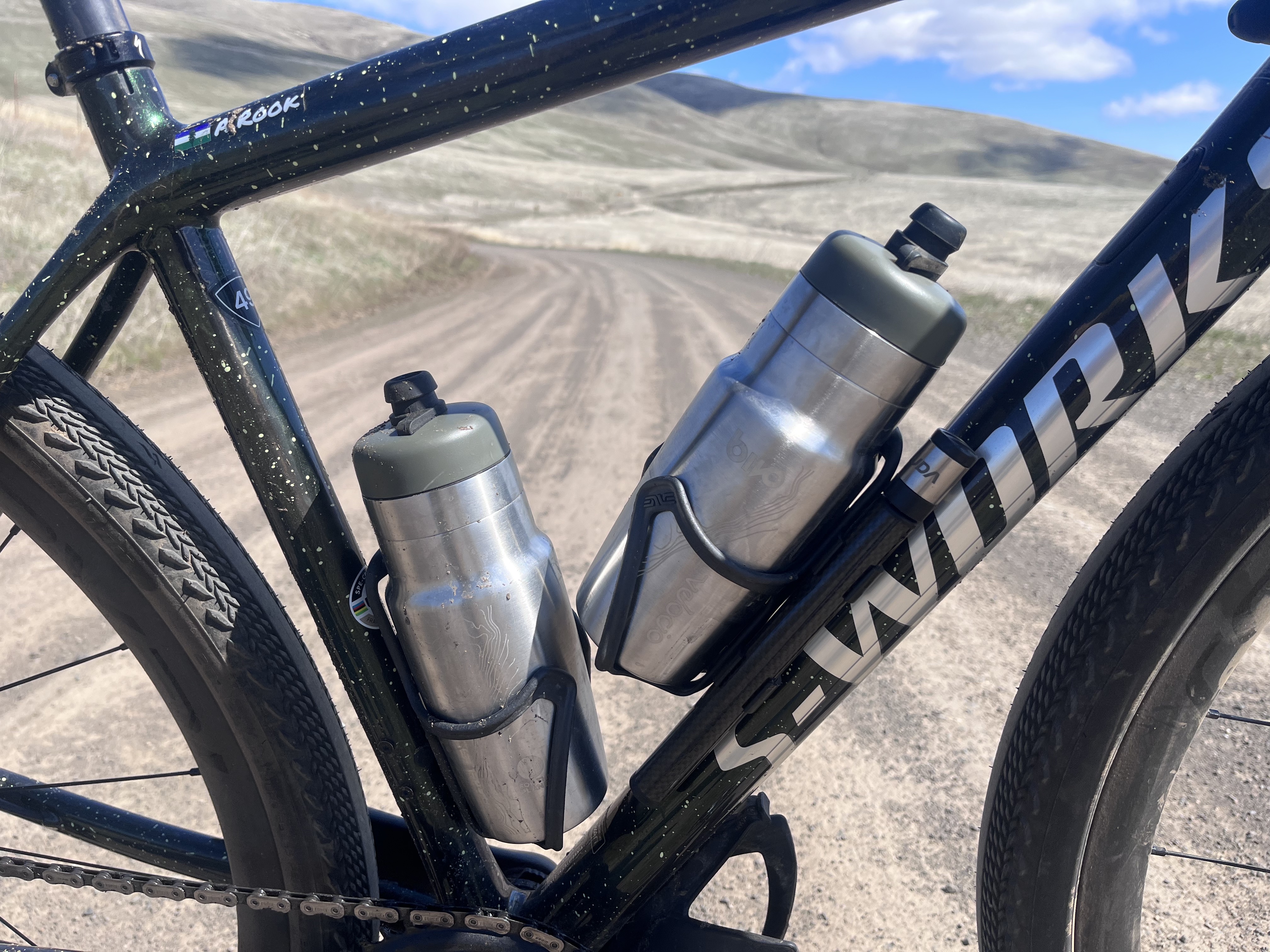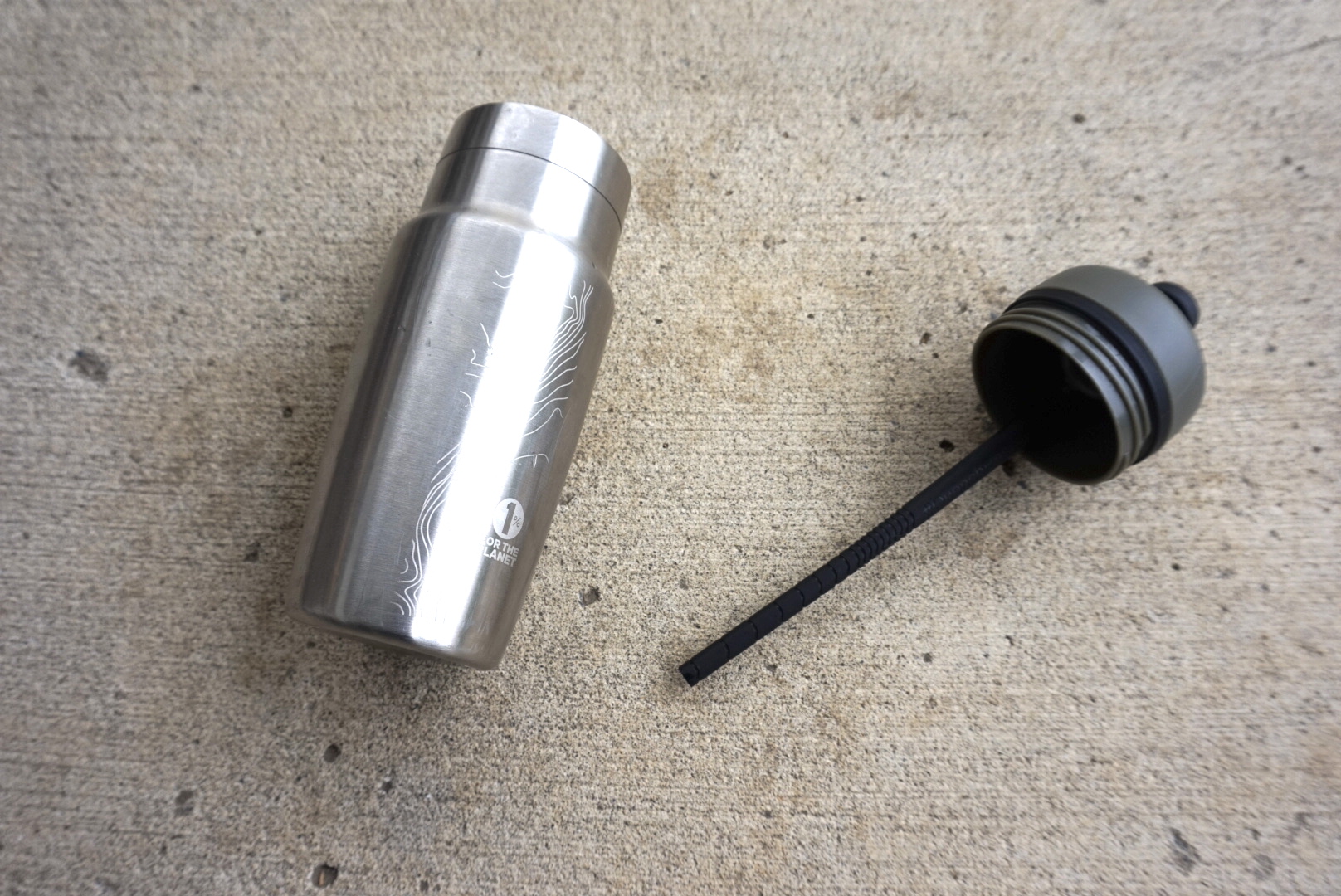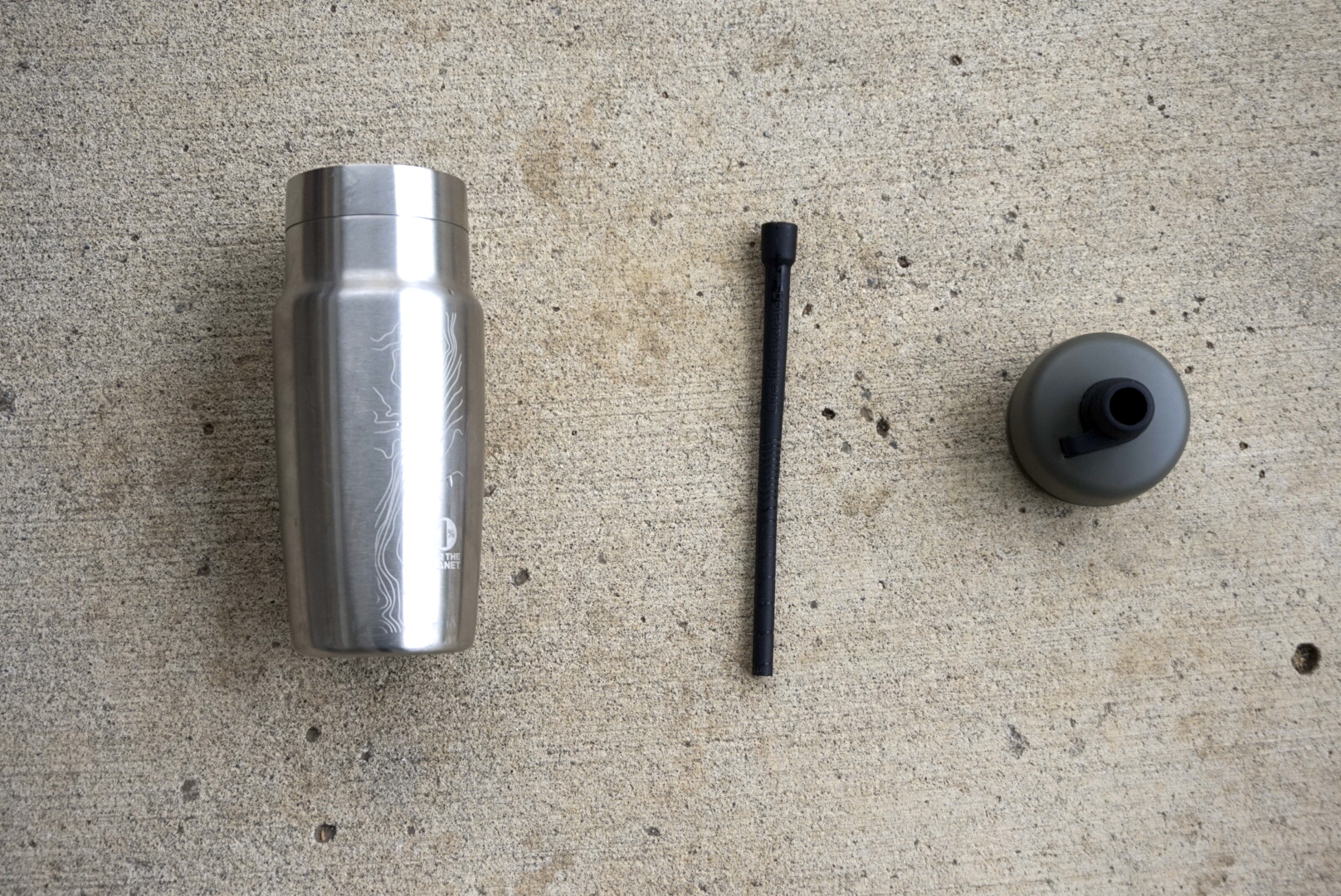
When we were getting ready to move into our new home in 2021, I could easily fill two Medium size moving boxes with water bottles. Sure, some have sentimental value, and others needed to be tossed out, but it's pretty shocking how many bottles you amass, and worse, throw away, in any given year. On the pro side, that number is staggering. To give you an idea, the EF Education – EasyPost men's team and EF Education – TIBCO – SVB women's team alone used 34,000 bottles in a single year.
While many go to eager fans on the sidelines, plastic water bottles are incredibly wasteful. While biodegradable water bottles are possible —Cannondale, for one, equips all its teams with 100% compostable bottles— but they're not commonplace.
Enter, Bivo, a company that's attempting to reinvent the cycling bottle as we know it in order to move the industry away from our dependence on semi-disposable plastic bottles..
With the help of a former NASA engineer, founders Carina Hamel and Robby Ringer produced a more sustainable water bottle with a better flow rate to boot.
"We realized from the beginning of creating the first Bivo bottle that it had to perform as well or better than traditional plastic cycling bottles. Why? As a product that was going to be focused on health and sustainability, we were confident that without nailing performance too, it would flop," the founders explain.
The problem, though, is that they were producing a stainless steel bottle. This metal is free of toxins, durable, easy to clean and won't rust. But, it is not pliable. Meaning you couldn't squeeze it like you a regular water bottle.
"We simply couldn't think of a cyclist who would use a nifty stainless bottle only to have to convince their cycling friend to pull over while they unscrewed the lid to drink. No, our bottle had to perform as well or better than plastic in multiple areas to ensure it would be adopted," says Bivo.

It took some 18 months of brainstorming, 3D printing, testing prototypes, but the team behind Bivo ultimately landed on what they call the Gravity Flow lid. This system relies on a lid with two openings. One serves as the nozzle you drink from. A second, smaller port has a removable straw attached to it, which extends to the bottom of the bottle. The secondary port's job is to pull air back into the bottle via the straw at the same rate as the air and water escape from the main nozzle. Unlike a regular bottle requiring a squeeze to change the volume and physically force water out of the single nozzle, the secondary port negates the need for a squeeze and creates a constant airflow, generating a smooth flow of water.
Like a regular bottle, you can open or close the system by pulling on the main nozzle. The parts that aren't steel, the lid and straw, are made of BPA-free polypropylene and food-grade silicone components.
Bivo launched its revolutionary water bottle in late 2020. Two years in, there are three models — the signature Bivo One, the Bivo Duo and the Trio insulated bottle. The bottles come in either a raw finish or with a silicone anti-slip exterior.
Bivo One Details:

- Material: stainless steel body, lid and straw made of BPA-free polypropylene and food-grade silicone components.
- 21-ounce capacity
- Raw or silicone finish
- fits standard bottle cages
- 100 percent recyclable
- Upwards of 165grams per bottle
- MSRP: $34 raw, $39 with a color, silicone finish
Bivo One - Ride Test:

Straight out of the packaging, the Bivo bottles feel like a premium product. I received a set of the 1% For the Planet bottles, which is a collaboration with the apparel brand, Velocio, and come in a raw steel finish with a neat, laser-etched design.
The bottles have some heft to them. At upwards of 165 grams per bottle, they're easily double the weight of a conventional plastic bottle.
The bottles fit in a regular cage, and while I have heard others complain about rattling, I encountered no rattling in the new Enve cages or the Elite cages.
The flow rate on this bottle is genuinely impressive and noticeably better than a regular water bottle. With the Gravity Flow system open and the bottle upside down, the bottle will drain itself remarkably quickly. No squeezing. No sucking on a straw. It just works and it's a pleasant experience.
On the bike —or any time, really, as I've started using these bottles all day long— this means consuming more water every time you reach for it.
And the stainless steel vessel produces a nice, clean taste — even on the hottest days when conventional bottles tend to produce a plastic-y taste. Cleaning the bottles is easy. The nozzle and straw can be popped off the lid and go straight into the dishwasher along with the vessel. But the Bivo recommends that you wash the lid by hand. To give the nozzle and straw a good scrub down, the bottles ship with a cleaning brush. The bottle is mold-resistant, but regular cleaning is still recommended.
In terms of durability, the bottles can take a beating but it is going to show. After regular use, my Bivo bottles have scratch marks from the cages and a dent from when I accidentally dropped a bottle. It doesn't impact the bottles' function by any means, but I do wonder if the silicone finish would prevent some of the superficial damage. Even scratched and dented, however, I think these bottles are going to last me a very long time.
Bivo One - Value and Conclusion:

Durable, toxin-free, easy to clean, great taste and an excellent flow rate — the Bivo bottles have a lot to be excited about. The reinvented water bottle isn't perfect — the bottles scratch and dent— but I'd happily trade in my cupboards full of plastic water bottle for a handful of these reusable, metal water vessels.
However, durability comes at a cost. Ranging between $34 and $39 per bottle, the price is significantly more than a convention bottle, made by Purist or Elite, that only costs around $12 on average. Eighty bucks for a set of bottles isn't insignificant, but these bottles will outlast any plastic ones and, therefore, likely keep several sets of bottles from ending up in landfill.
I should note that these bottles aren't great for traditional road racing. They're probably too heavy and expensive to toss willy-nilly into the feed zone. Plus, they'd likely dent upon the impact. And, given how robust they are, a wheel isn't going to squish the vessel, which poses a bit of a crash risk for you or your fellow racers should you drop one.
But for everyday riding and general, everyday use, they're excellent.







